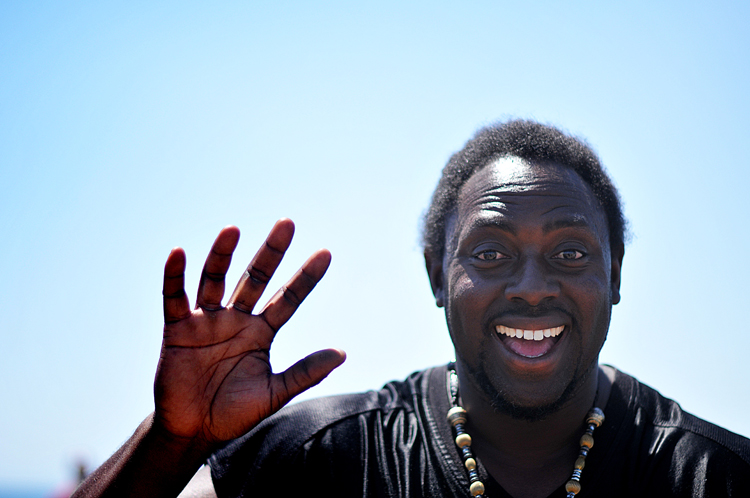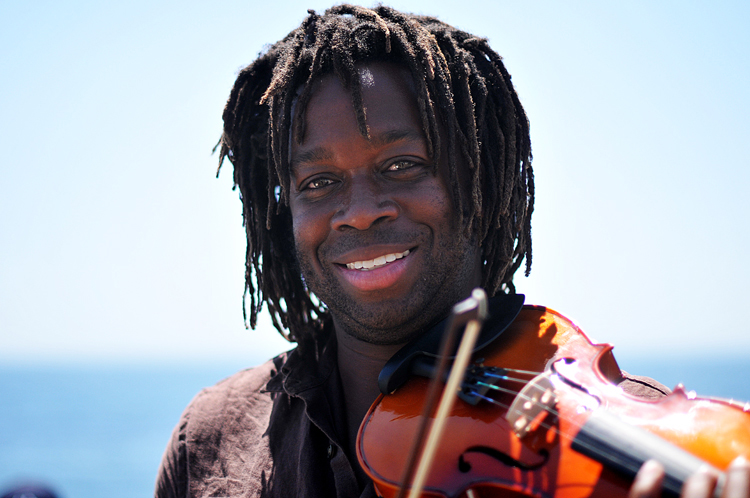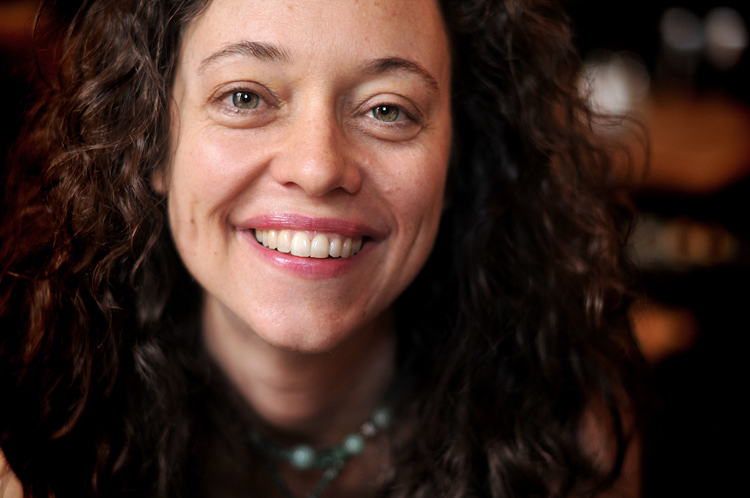occasionally technical tuesday: photographing strangers
 Some time ago, I received the following message from a friend:
Some time ago, I received the following message from a friend:
"Okay, this may be way off-base, but what is the etiquette of photographing interesting-looking strangers while traveling? Do you ask permission first? What if you don't speak the language? Do you take stealth photos? Only shoot strangers from behind?"
All very valid questions, and unfortunately, as with most questions of this nature, the answer is "it depends." And since I've been traveling quite a bit lately (and many more trips are to come in the relatively near future), for this Occasionally Technical Tuesday I thought we'd talk about some issues to take into consideration when taking photographs of total strangers (however, when it comes to taking photographs of your own uncooperative companions, you're on your own).
First of all, consider privacy laws. Usually, the primary concern when taking photographs of strangers is whether consent is required in order to take the photograph, and the laws of the country you're in will usually answer this question. If you're in the United States, the current laws are generally simple: if you're in public, and the subject of your photograph doesn't have "a reasonable expectation of privacy," then you can legally shoot away without getting their consent.
An example: say you're at a park. Or at the beach. Or the farmer's market. Or just on a busy street. In these cases, the people that you encounter (and who end up getting captured by your camera) have no reasonable expectation of privacy, and there is therefore no legal reason you need to get their consent before taking their picture.
If, however, you're in the restroom of a public park, all bets are off: even though it might be argued that a public restroom in a public park is public property, the fact is that people who are going to the bathroom have a reasonable expectation of privacy -- and therefore, you need to put your camera away.
Keep in mind, of course, there are certain public places where you are expressly prohibited from taking photographs -- some museums, for example, request that you do not take photographs; similarly, military establishments may ask, for the purpose of security, that you do not take photographs. In these cases, it's always a good idea to go ahead and stow your camera.
Also: if you're taking photographs of people with the intent of selling the photographs to stock photography sites and the like, you really should go ahead and get a consent form signed by your subject, since the organizations who use the stock photography are going to want to make sure that they aren't inadvertently violating privacy laws.
For a great quick summary of the rules about taking photographs in public places in America, check out this article on USAToday.com. It's a pretty good cheat sheet of the general rules on public photography as they exist today -- however, keep in mind that laws are liable to change at any time.
And finally, a word of caution on taking photographs outside of the United States: please note that privacy laws vary from place to place; furthermore, new laws are being enacted all the time. For example, in the United Kingdom, there is an anti-terrorism law in place which prohibits you from taking photographs of the iconic British bobby, even accidentally. And again, different countries have different laws. So before going overseas, it's a good idea to research the local laws affecting the taking of public photographs, lest you find yourself in more trouble than you bargained for.

Now.
Aside from local photography laws, what else can you do to make sure that you get proper consent to take photographs? The following are things I tend to keep in mind.
1. You can feel relatively comfortable taking photographs of street performers.
Since street performs or buskers are, after all, performing their craft ostensibly for the tourist trade, you can feel pretty comfortable that you have their implied consent to take their photographs. Even so, it's always a good idea to have some spare change to tip them for the privilege of taking their photographs. Often, busking is a large percentage of that performer's income, so if you enjoyed his performance enough that you felt compelled to take his photograph, it's only polite to offer a bit of cash.
Even if he clearly posed for your photograph.

2. Smile, and ask politely for consent.
Of course, the safest thing to do is to simply ask the person if you can take his or her picture. I've found that saying something like the following works best for me:
"Hi, I'm Karen, and I'm on vacation from Houston/Texas/America. Would you mind if I took your photograph? I'm a photographer, and you have a great face. I hope that would be okay?"
In my experience, if I'm warm, sincere, and I pay a compliment (generally made to avoid the misconception that I'm asking for a photograph because I think the subject is a freak show), people are more than happy to allow me to take their photograph.

The key, of course, is (a) to be friendly and sincere, and (b) don't leer, no matter how completely hot you think the person is. In addition, and particularly if the person seemed hesitant in saying yes, I generally show the person the image I've taken on the screen on the back of my camera -- it's a simple gesture that allows them to see that the photograph doesn't look weird or inapporpriate. If the person seems to really like the photograph, I will sometimes offer to email the image to them (because really, how often do we get a photograph taken of us that we're really happy with?), but I'll only do so if I don't think the person will be weirded out by the offer -- for example, a few years ago I took a photograph of a man with his infant son on a deserted beach one early morning, and he was thrilled to have a copy of the photo emailed to him. We never spoke again.
And then, of course, I thank the person again for allowing me to take the photograph.
Now, what about if you're visiting a country where you don't speak the language, but you know you're going to want to take photographs of the locals? I would strongly recommend that you at least learn the phrase, "Would you mind if I take your photograph?" in the local language. It is my experience that any attempt to connect through trying to learn the local language is always greatly appreciated -- and while smiling and pointing to your camera may convey what you're trying to accomplish, any additional (and sincere) attempt to connect is a good thing.
Finally, it should be noted that in some cultures, it will be expected that you pay for the privilege of snapping a photograph, regardless of whether the subject of your photo is a street performer, busker or not. Do not get huffy, understand it's simply a cultural difference, and remember it's never a bad idea to have the equivalent of a couple of dollars in your pocket in the local currency specifically for this purpose, if asked.
So that's it -- I hope this helps! For those of you who are avid shutterbugs yourselves, I'd love if you'd share your own tips for photographing strangers. And incidentally, all of the photos above are of total strangers who kindly took the time out of their days to pose for me -- and I'm forever grateful.
Happy snapping, everyone.
Occasionally Technical Tuesday is a new feature here on Chookooloonks, where we'll tackle topics like choosing a camera, how a camera works, how I choose lenses, how I use Photoshop, how I pack for a photo trip, that sort of thing. You can see an entire index of subjects we've addressed here. I'm no expert, but I'll share what I know, occasionally. And also -- particularly in this post -- while I am a lawyer, nothing in this post (or the comments) should be construed as my giving legal advice. You should always ask a lawyer versed in the local law about your specific situation with your specific facts if you're unsure about something.
Images: The first image is from so deep in my archives, I can't find the shooting data for it, I'm sorry. The remaining photographs were shot with my Nikon D300, 50mm lens. The second and third photographs were shot at aperture 1.4, shutter speed 1/8000, and ISO 200. The final photograph was shot at aperture 1.4, shutter speed 1/160, and ISO 200.
Song: I turn my camera on by Spoon